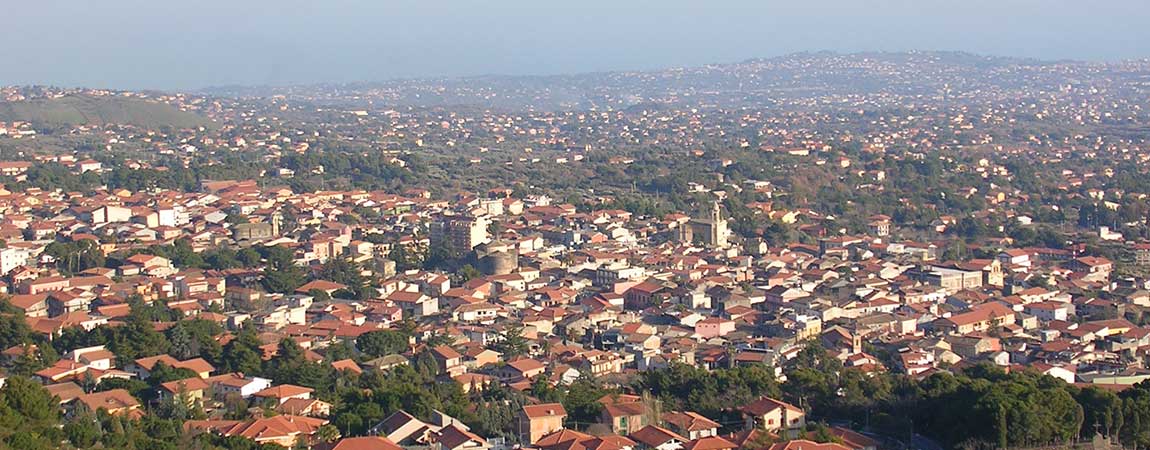
The natural monument symbol of the whole of Sicily is obviously Etna, the highest active volcano in Europe, which often manifests all its strength with eruptions that are as spectacular as they are frightening.
Yet on its slopes there are not a few villages that coexist with its disturbing presence and one of these is Nicolosi, otherwise known as the Gate of Etna. The village rises in the heart of the marvelous Etna park, among pyroclastic cones born from previous eruptions, including the iconic ones Red Mountains: these were defined as "twin peaks" by Goethe in his Journey to Italy, later describing the peak of the volcano covered in snow and smoking.
Nicolosi: a village shaped around Etna
Nicolosi has a name curious that derives from the presence, in the past, of the Monastery of San Nicolò: after the continuous eruptions of Etna and the increasingly assiduous assaults of brigands in the XNUMXth century, however, the Benedictines left the convent for Catania.
The origins of the village date back to the 1536th century and there are many personalities who have stayed here for a while, from the wife of Frederick II of Aragon, Eleonora, to Bianca di Navarra, who gave the population a lot of courage to start over after each eruption of the 'Etna. In fact, Nicolosi had to leave several times due to the destructive lava coming from the volcano: among the most devastating eruptions are those of 1663, 1669 and especially 16, which even devastated Catania, XNUMX km away.
Etna has shaped the area surrounding Nicolosi, making it lunar and evocative, despite the presence of a luxuriant Pineta, also dotted with birch and beech trees, which represents the perfect meeting place to spend a few hours relaxing in contact with nature.
Nicolosi could not fail to host the Volcanological Museum of Etna, divided into two areas, the first of which tells the evolutionary history of the volcano thanks to photographs, blow-ups and documentaries. The second part of the Museum is located in an old farmhouse dating back to the 800th century and houses a great deal of material collected following the many eruptions that have occurred over time, including silicates, volcanic bombs, hematite crystals and slag.
The volcanic stone itself is the protagonist of thehandicraft by Nicolosi: just stroll through the shops in the historic center of the village to realize this, without however neglecting the street food local, between arancini, cipolline (puff pastry filled with ham, tomato and mozzarella).
Churches, museums and excursions on the volcano
Among the things to see absolutely in Nicolosi is the Monastery of San Nicolò l'Arena, founded in the XNUMXth century to offer hospitality to the sick: it is said that Eleonora d'Angiò died right here. Today the monastery is headquarters of the Etna Park Authority and also includes a small Baroque church from the 700th century, complete with a lava stone facade.
Worth seeing is also the Mother Church of the Holy Spirit, flanked by a lava stone bell tower and the Church of San Francesco di Paola, dating back to the XNUMXth century and located on a small square where hangings once took place.
Very beautiful then are the Three altars, located inside three arches and built in 1776 with representations of those who are considered the protectors of Nicolosi, namely Sant'Antonio Abate, Sant'Antonio da Padova and the Madonna delle Grazie.
To learn about Nicolosi's agricultural past, one cannot fail to visit the Museum of Peasant Civilization: in it the settings linked to the trades of the past are reproduced, from the wooden looms to the sewing machines to the stoves used to make bread.
At Nicolosi they can be organized excursions on Etna, where in winter you can also ski, being part of a ski area that reaches almost 2700 m. high reaching up to Montagnola. The tours lead to Rifugio Sapienza at 1800 m. in height, which can also be reached via a path on Silvestri Mountains which allows you to admire five eruptive cones.
From Rifugio Sapienza you can take the Etna cableway and reach the Philosopher's Tower at 2900 m. high. It is said that the construction was born on the same place where the philosopher Empedocles built a small refuge, and then committed suicide by throwing himself into a crater.
Among the most scenic hiking trails on Etna there is the "Back Path of the Donkey“, overlooking the Valle del Bove and the “Monte Nero degli Zappini Nature Trail” where you get up to 3357 m. of height.
Nicolosi represents the ideal stopover for those wishing to explore the Etna Park between adventurous excursions and visits to the village's Volcanological Museum.
What to do on Etna and its surroundings
© Image by Joseph ME, CC BY-SA 3.0, via Wikimedia Commons









